We sincerely hope that each of you, our readers, will greatly enjoy and appreciate this article we present about these 5 Sensational Salamanders. It was certainly our pleasure to gather the various information for your perusal. May it provide you with both education and increased awareness.
Certainly, while fascinating, these few species listed herein represent only a tiny portion of the similar wonders found around the world. It’s our belief, though, that they serve as excellent representations of their kind that exist. Check out some of our other articles for similar marvels.
Hellbender Salamander
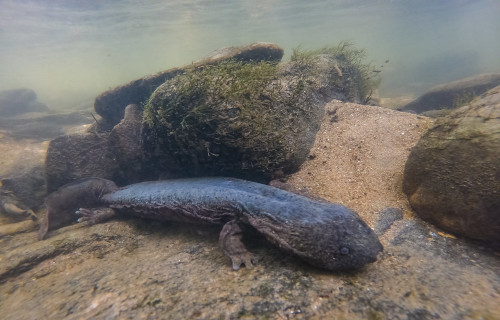
Hellbender Salamander Facts
- Leading off this article about these 5 Sensational Salamanders comes the devilishly intriguing creatured named the Hellbender Salamander.
- This astonishing creation of Nature and evolution most frequently goes by the attention-grabbing common name that we’ve listed above. The amazing animal does have at least one alternate title, though. That’s simply the extremely similar moniker of Hellbender.
- Within the scientific community, however, it’s probably much better known by its technical title. Unfortunately, that’s an extremely difficult designation for the layperson to pronounce. That’s because this amphibian bears the technical tag of Cryptobranchus alleganiensis.
- The animal received that tongue-twisting epithet due to the efforts of François Marie Daudin. The respected French zoologist accomplished the first recognition of it as a separate and distinct species. He managed that scientifically noteworthy deed in the year 1803.
- The intriguing creature stands out from others of its kind in several ways. For one, it ranks as the largest known salamander on its continent. It also represents the only surviving member of its genus known to science. These alone distinguish it from others within its range.
- Sadly, both the current territorial range and population base of the Hellbender Salamander seems to be dwindling rapidly. The decline in numbers additionally appears to hold true across its entire remaining range. The IUCN understandably currently list it as Vulnerable.
- The reduction of its native region largely occurs due to various human activities. Habitat degradation and its outright loss certainly rank high among these. Yet, the awesome animal also now faces the same threat posed by ongoing climate change as all species on earth.
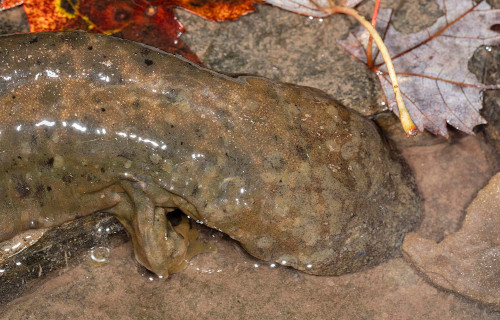
Hellbender Salamander Physical Description
The remarkable Hellbender Salamander constitutes an impressive creature that garners a great deal of attention from those individuals who encounter it. Few people find salamanders visually appealing, per se, so most of that interest stems from the sheer physical size of the amazing animal.
In that respect, this natural wonder separates itself from many species, though. That’s due to the fact that it displays virtually no outwardly detectable degree of the physiological characteristic called sexual dimorphism. This makes distinguishing the two sexes at a glance extremely difficult.
Individuals of both genders of the amazing species therefore achieve the same basic dimensions. In terms of both its body and tail length, this varies quite significantly between specimens, however. On average, though, this specific measurement ranges from roughly 12 – 29 in (30 – 74 cm).
The mass of the highly unusual amphibian likewise varies accordingly, completely regardless of gender. For most observed individuals, though, this typically ranges from somewhere between 3.3 – 5.5 lbs (1.5 – 2.5 kg). Nonetheless, exceptional specimens of both sexes do occasionally occur.
Yet, the intriguinng Hellbender Salamander also has still other physical attributes to appeal to those with an interest in Nature. Unlike other salamanders in its region, this creature evolved a highly flattened body shape. It also has thick folds of skin hanging down the sides of the body.
It additionally evolved a flattened head, and the notably slimy skin common to its kindred. Meanwhile, the legs of the animal develop as relatively short. The front feet display four toes each, while the rear legs have five toes each. While adults have working lungs, they also retain gill slits.
- Kingdom: Animalia
- Phylum: Chordata
- Class: Amphibia
- Order: Urodela
- Family: Cryptobranchidae
- Genus: Cryptobranchus
- Species: C. alleganiensis

Hellbender Salamander Distribution, Habitat, and Ecology
The remarkable Hellbender Salamander evolved as native to a comparatively small section of the surface of the earth. The precise location of that zone of habitation, however, might suprise some people. That’s because it developed as endemic to a very small portion of North America.
Within that greater range, though, the animal only appears in a small section within the borders of the United States. Yet, even there it only lives in a tiny part of the eastern section. That territorial range includes all or part of a total of nineteen different state, from New York to Georgia.
Inside of that territorial range, the amazing amphibian typically displays decidedly strong preferences regarding its choices of habitat. In fact, these requirements remain so precise that it’s considered a true habitat specialist. It thus fills a very limited niche in a specific ecosystem.
Thus, the animal’s found almost exclusively in areas comprised of markedly narrow flows possessing fairly swiftly moving currents. It also needs the presence of numerous large, preferably flattened rocks. The creature generally avoids wider bodies of water that have slower rates of flow.
The mighty Hellbender Salamander evolved as carnivorous. Its principle prey appears to consist of small fish and crayfish. Yet, it also consumes other prey, such as worms, insects, molluscs, tadpoles, and even smaller salamanders. Adults of this species have very few predators themselves.
This wonder of Nature also displays a demonstrably strong territorial preference. Once an individual finds an area it likes, it rarely leaves voluntarily, except to mate or hunt. Though researchers remain uncertain, the animal also seems to be mainly nocturnal in its behavior patterns.
Fire Salamander
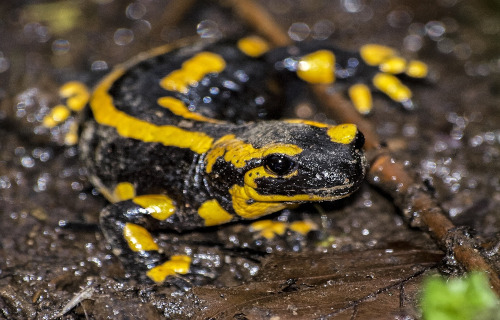
Fire Salamander Facts
- Next up in this compendium of 5 Sensational Salamanders comes the remarkable work of Nature given the title of Fire Salamander.
- This amazing product of evolution is most frequently known by the attention-grabbing common name throughout its entire range. For the moment, the amazing animal has no other widely accepted general title. But with the one it has, it really doesn’t need others.
- Within scientific circles, however, it’s usually better known by its technical title. That’s a distinctive one, though. It’s also relatively simple for the layperson to pronounce. That’s because the amphibian bears the official moniker of the Salamandra salamandra.
- It received that almost poetic name due to the efforts of Carl Linnaeus himself. The highly esteemed Swedish zoologist accomplished the first formal recognition of the animal as a separate and distinct species. He achieved that scientifically noteworthy deed occurred in 1758.
- It’s a fascinating creature for many reasons. Among these remains the fact that multiple subspecies of the animal exist. Currently, researchers acknowledge a grand total of 13 of these. Many of those also share the same habitat range, often creating much confusion.
- Fortunately, the Fire Salamander seems to be maintaining a population base that’s both stable and sufficient. That pleasant condition further appears to hold true throughout the entirety of its range. The IUCN therefore now lists the animal as Least Concern on its published Red List.
- The salamander still faces several potential threats to its existence, at least. Many of these stem from the actions of humans. They include such perils as habitat degradation and loss due to human expansion. It also naturally faces the pervasive threat of ongoing climate change.
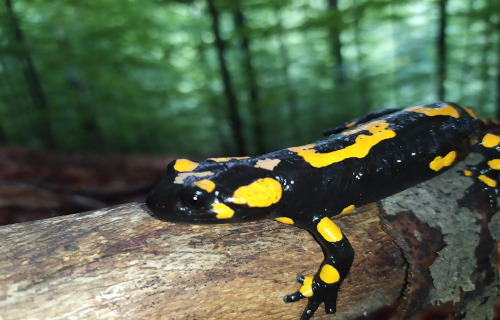
Fire Salamander Physical Description
The intriguing Fire Salamander generally captivates those individuals fortunate enough to encounter it. The creature typically does so, however, due more to its appearance than sheer physical size. That’s true since, in that particular respect, it ranks as about average among its numerous kin.
It does follow an evolutionary pattern common among its relatives, though. That’s in the fact that it displays a certain degree of the physiological characteristic of sexual dimorphism. In the case of this amphibian, that trait manifests itself in terms of both its appearance and physical structure.
Individuals of the amazing species attain an overall average length of body and tail for an amphibian. This measurement equates to between 9.8 – 11.8 in (25 – 30 cm) in adults. Typically, however, the females reach a slightly greater length than their male counterparts manage.
The tail usually develops as somewhat cylindrical in shape, and somewhat shorter than the body. The legs also develop as comparatively short. In yet another example of gender-based physical differences, both the tail and legs of the female generally remain shorter than males.
Yet it’s the color pattern of the dazzling Fire Salamander that most often garners the greatest amount of attention. The back and sides present a background of a deep black color. That’s contrasted strongly by the presence of spots and or bands. These show as either a yellow or orange.
The underside presents a somewhat different pattern of coloring. This part of the body of the appealing animal generally presents either a very dark brown or black shade. Most examples do not have the spots or bands present here, but variations and exceptional specimens do naturally occur.
- Kingdom: Animalia
- Phylum: Chordata
- Class: Amphibia
- Order: Urodela
- Family: Salamandridae
- Genus: Salamandra
- Species: S. salamandra
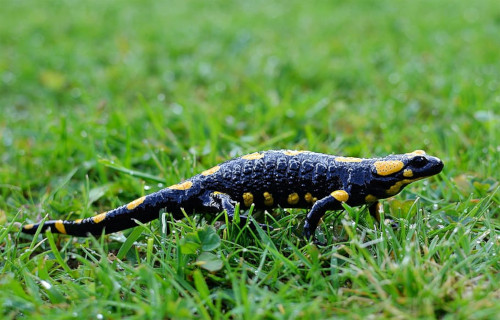
Fire Salamander Distribution, Habitat, and Ecology
The Fire Salamander evolved as native to a moderately wide expanse of the surfeace of the globe. This serves as a source of occasional confusion, hower. That’s because many of its subspecies appear nearly identical, and they live in other parts of the world, as well as its own range.
This species itself, though, only appears in what’s now known asthe continent of Europe. There, the amazing creature primarily lives in the southern and central portions of the continent. That ranges from Spain and Portugal in the southwest to Poland in the north, and to Italy and Greece.
The animal also evolved decidedly strong preferences regarding its choice of habitat. This principally consists of highly forested regions. Even there, though, the amphibian displays a qualifying preference. In these forested areas, it most often shows itself in areas of significant hills.
It does seem to prefer deciduous forests, however. Within these regions, the fauna frequently conceals itself either on or near mossy tree trunks or amid clumps of fallen leaves. It additionally requires the nearby presence of small streams or ponds with an abundance of clean water.
The Fire Salamander evolved as principally active in the evening and at night. It also comes out during the day when it’s raining, though. When not actively hunting or fleeing from predators, it spends the vast majority of its time hiding under various available objects for its own protection.
It also developed as a purely carnivorous species, like most of its many relatives. The majority of its prey consists of such smaller creatures as spiders, various insects, centipedes, millipedes, earthworms, and slugs. Yet, it sometimes varies this with the addition of newts and young frogs.
Its own predators remain quite few and far between, however. That’s due to the fact that it’s moderately toxic if eaten. Few animals therefore feed on it, though a few remain either immune to or tolerant of this trait. Its main threats come from grass snakes, hawks, eagles, and larger reptiles.
Axolotl
Axolotl Facts
- Our next choice for inclusion in this gathering of 5 Sensational Salamanders is the astounding marvel known simply as the Axolotl.
- This extraordinary creation of Nature and evolution is a species of amphibian best known by the simple term we’re using here. This actually derives from an ancient Aztec word meaning water dog. For the moment, this natural marvel has no other generally used name.
- Within scientific circles, however, the creature’s perhaps much better known by its technical title. Like many such terms, though, that’s somewhat hard for the layperson to pronounce. That’s because the biological wonder holds the formal moniker of Ambystoma mexicanum.
- The English zoologist, George Shaw, and the English illustrator, Frederick Nodder, hold joint credit for bestowing this name. The pair accomplished the first acknowledgement of it as a separate and distinct species. This scientifically noteworthy action occurred in the year 1798.
- No matter which of these terms one chooses to use, however, it’s a fascinating creation of evolution. It’s often confused with a related species, the tiger salamander. Today, the animal represents a frequent and intense subject of study due to its remarkable regenerative abilities.
- Sadly, the remarkable Axolotl currently appears to be rapidly declining in numbers. This unfortunate trend further seems to hold true throughout the entirety of its known, and limited, range. The IUCN therefore presently lists the animal as Critically Endangered on its Red List.
- Its own habitat range limits its potential for maintaining a stable population base. Yet it also faces other threats as a species in addition to this factor. Many of these are due directly to the actions of man. They include habitat loss, and of course, now the effects of climate change.
Axolotl Physical Description
The remarkable Axolotl possesses a truly extraordinary physical appearance, to say the least. It’s the characteristic that typically first catches the eye of any observor. Even the fully mature adult specimens display physical characteristics that qualify as typical of other salamander larvae.
Despite this highly unusual trait, the distinctive animal does follow some patterns of growth common to its numerous relatives. That’s true since the amphibian displays a fairly moderate degree of the anatomical trait of sexual dimorphism. In its case, this manifests in measurements.
Females of the impressive species tend to have wider body shapes than the males. This occurs due to the presence of large numbers of eggs held within their bodies. Males, meanwhile, obviously lack this. Otherwise the genders are virtually indistinguishable without much closer examination.
Mature adult individuals attain roughly the same physical size. Although this varies significantly, it occurs on an individual basis, entirely regardless of gender. The average length measures roughly between 6 – 18 in (15 – 45 cm). Most typically reach 9 in (23 cm), with greater sizes being quite rare.
The head of a mature Axolotl also develops as relatively broad, and the eyes remain entirely lidless. When young, individuals often show an almost translucent shade. Intriguingly, among adults, the colors vary widely. These hues run from dark gray to green, brown, and occasionally even black.
Yet probably the most captivating physical feature of the truly unusual animal is its gills. Among all other known salamanders, these disappear completely following maturity. But with this creature, they remain. These six feather-like structures protrude from just behind each side of the head.
- Kingdom: Animalia
- Phylum: Chordata
- Class: Amphibia
- Order: Urodela
- Family: Ambystomatidae
- Genus: Ambystoma
- Species: A. mexicanum
Axolotl Distribution, Habitat, and Ecology
The almost unbelievable Axolotl evolved as indigenous to a unique section of the earth’s surface. That region of the world that might surprise some. One might expect such a marvel to be tropical in nature. It actually developed as native to a very specific portion of the continent of North America.
Within those boundaries, though, the amphibian appears in only one extremely tiny zone of habitation. That limited region lies inside the national boundaries of the country of Mexico. More exactly, the amphibian’s only known to exist in the immediate area of southern Mexico City.
Its entire known habitat comprises the waters forming Lake Chalco and Lake Xochimilco, situated in the Valley of Mexico. The former now no longer exists, due to its intentional draining as a form of flood control. The latter still exists, but only as a shadow of its former self, limiting it further.
The species developed as uniquely adapted to the very specific environmental conditions found here. That includes a precise range of temperatures for the water they frequent. This falls to as low as 43 – 45F (6 -7 C) in winter. During summer, however, it rarely rises higher than 68F (20C).
The Axolotl also evolved as purely carnivorous in nature. In the wild, individuals consume various small prey locally available. These most typically include worms, insects, mollusks, and other arthropods. They also often feed on small fish. The incredible species hunts via its sense of smell.
Subsequent to the mating process, females lay eggs individually, usually on various plants. In the wild, most examples live between 5 – 6 years. It’s their regenerative abilities that most distinguish them, though. They’re known to fully replace lost limbs, eyes, and even parts of the brain!
Texas Blind Salamander
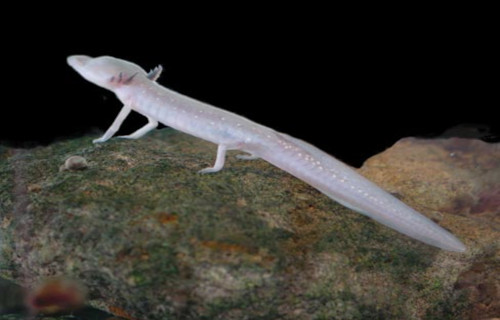
Texas Blind Salamander Facts
- Here, in this compilation of 5 Sensational Salamanders, one finds the fascinating wonder that goes by the designation of Texas Blind Salamander.
- This distinctive-looking amphibian most frequently goes by this informative common name due to the specific nature of its territorial range. Yet this marvel of Nature also has another name that, while still hard to pronounce, rolls off the tongue with comparative ease.
- That’s because, like all species, the unique creature also has a formal, scientific name. In most instances, though, this term’s somewhat difficult for non-professionals to pronounce. In the case of this particular fascinating species, though, that’s a relatively simple alternate name.
- This holds true due to the specific fact that, inside the halls of science, it bears the official name of the Eurycea rathbuni. This marvel of Nature further received this moniker as a result of the work of the Norwegian-born American zoologist, Leonhard Hess Stejneger.
- He accomplished the first formal recognition of the creature as a separate and distinct species. he achieved that feat in the year 1896. Uniquely, it also has an alternate scientific name that he assigned it. Though no longer used, it once bore the name of the Typhlomolge rathbuni.
- Unfortunately for those who appreciate the wonders of Nature, it now finds itself facing several threats to its continued existence as a species. Due to that combination of multiple factors, the IUCN currently lists the astounding amphibian as Vulnerable on its Red List.
- The nature and extent of its own natural range lamentably renders the Texas Blind Salamander extremely vulnerable to habitat degradation or loss. The ongoing threat of climate change, however, no doubt also poses a dire threat to its existence, like most species on earth.
- Efforts are being made to preserve this incredible product of countless ages of evolution, though. That’s because, in 2013, the USFWS approved a specific habitat conservation plan. This project aims at protecting its local environment, thereby reducing stresses on the species.
Texas Blind Salamander Physical Description
The Texas Blind Salamander fully merits appreciation for its physical attributes in several ways, to be certain. The most notable among these, however, is no doubt its eyes. More precisely, the lack of them qualifes as such. Technically, though, the awesome animal does actually have these organs.
These visual centers remain vestigial, though, and extremely primitive in their structure. They additionally lie under the skin, completely covered, and thus remain completely nonfunctional. Given the habitat of the animal, though, such organs would be completely superfluous.
Unlike many of its numerous related species across the globe, this creature displays no noticeable degree of the physiological characteristic of sexual dimorphism. It’s therefore quite difficult for an untrained individual to tell the genders apart, as they thus remain visually indistinguishable.
Both genders of this remarkable animal, in fact, actually remain relatively small in terms of dimensions. That’s because mature specimens only attain a maximum known body length equaling roughly 5.5 in (14 cm). Most individuals, however, generally reach a size closer to 3.5 in (9 cm).
The body shape of both sexes also developsa distinctive form, being highly elongated, again, like most of its many kindred. The amphibian also develops a relatively broad, flat head and snout. The flesh-covered eyes literally comprise nothing more than two small black dots visible under the skin.
Due to its isolated environment, the Texas Blind Salamander posseses no need for pigmentation in its skin. It thus presents as a pasty, off-white in color. The gills of the animal protrude from the throat, and surprisingly represent the sole exception to this pattern, being a brilliant red.
- Kingdom: Animalia
- Phylum: Chordata
- Class: Amphibia
- Order: Urodela
- Family: Plethodontidae
- Genus: Eurycea
- Species: E. rathbuni
Texas Blind Salamander Distribution, Habitat, and Ecology
Obviously, the very name of this distinctive creature holds clues to its range of distribution. Unfortunately, both for it, and those of us who value Nature, it evolved as native to a highly restricted range of the world. It also appears that it never spread beyond that range.
This fascinating amphibian apparently evolved as indigenous to only a very small portion of what now constitutes the country of the United States, in North America. More specifically, there, the intriguing animal appears to only reside within the local boundaries of the state of Texas.
Even within that already severely restrictive range, the creature remains limited to a very tiny, and highly specific, zone of habitation. That’s due to the fact that specimens inhabit a total of only seven known locations, all located in a single portion of the state, that being named Hays county.
Amazingly, within that territory, this wonder of evolution only makes its home inside very specific environments. These consist solely of water-filled caves, in the Purgatory Creek System, and along the San Marcos Fault. This therefore places its range solely in the vicinity of the city of San Marcos.
Like its many relatives, the intriguing Texas Blind Salamander feeds as a pure carnivore. It also feeds opportunistically. Due to the nature of its habitat, it consumes various small prey, including snails, blind shrimp, and other tiny crustaceans, most of which flow into its area in the water.
Due to the extremes of its specific natural environment, researchers do not know a great deal about its life cycle. It’s believed by scientists, however, that the species breeds throughout the entirety of the year. Its lifespan in the wild remains unknown, but captive specimens live up to 10 years.
Chinese Giant Salamander
Chinese Salamander Facts
- Closing out this articles about these 5 Sensational Salamanders we present the breathtaking amphibian appropriately called the Chinese Giant Salamander.
- This astonishing work of evolution bears this informative, as well as accurate, common name for clearly obvious reasons. It also bears another, more difficult to pronounce name. That’s because it holds the scientific name of the Andrias davidianus.
- It received that title due to the efforts of the highly respected French zoologist and entomologist Charles Émile Blanchard. This researcher recorded the first formal recognition of it as a separate and distinct species. This scientifically notable event occurred in 1871.
- For the moment, however, it also serves as the focus of ongoing, serious scientific debate. That’s due to the results of recent DNA research. A 2018 study revealed that several subspecies of the remarkable creature may in fact exist. This would complicate its classification.
- Impressively, the animal holds several distinctions in the annals of science, in fact. The first’s a strongly positive one, of sorts. That’s because it’s presently the largest of all known amphibians. The second, however, isn’t as fortunate. It also remains among the most threatened of them.
- Therefore, the IUCN lists it on the organizations’ published Red List of Threatened Species. On that list, it holds the regrettable status of Critically Endangered. The remarkable amphibian currently faces several threats to its existence, including habitat loss and human consumption.
- Unfortunately, the breathtaking Chinese Giant Salamander now finds itself in dire straits. It’s facing multiple threats to its continued existence as a species. Like most forms of life on earth today, most of these stem from the actions of man. They include the threat of climate change.
Chinese Giant Salamander Physical Description
The mind-blowing Chinese Giant Salamander virtually never fails to immediately grab the attention of anyone fortunate enough to encounter one of these creatures in the wild. Unlike the vast majority of its numerous relatives around the world, though, it does so due to its astounding size.
In referencing its physical attributes, it must be noted that it distinguishes itself from many animals in a distinctive manner. That’s because this work of Nature displays no noticeable degree of the physiological characteristic of sexual dimorphism. Though not unknown, it’s certainly uncommon.
The lone known exception to this somewhat uncommon fact occurs during its mating season. That’s because, at that specific time, certain glands of the males swell temporarily. With that sole exception, the two genders of the species remain virtually indistinguishable to the naked eye.
More precisely, specimesn of both genders frequently grow to relatively enormous sizes, as the common name clearly implies. A mature individual attains an average length equaling an amazing 3.8 ft (1.16 m). These same specimens average a body weight of about 55 – 66 lb (24.9 – 29.9 kg).
Naturally, exceptional specimens do sometimes occur, however. In fact, some rare examples occasionally attain lengths reaching as great as 5.9 ft (1.8 m). The weight of these same creatures sometimes equals a much as 130 lb (59 kg). The Chinese Giant Salamander clearly earns its name.
Its also has a very startling, wrinkly appearance. In color, the animl usually presents a background of dark brown, with a speckled or mottled pattern present. Some, though, can be dark brown, reddish, or even black. The creature further has an outsized head, wide mouth, and small, lidless eyes.
- Kingdom: Animalia
- Phylum: Chordata
- Class: Amphibia
- Order: Urodela
- Family: Cryptobranchidae
- Genus: Andrias
- Species: A. davidianus
Chinese Giant Salamander Distribution, Habitat, and Ecology
The very name of the awesome Chinese Giant Salamander obviously provides a clue to its native range. To the knowledge of science, this magnificent creature lives only in the portion of Asia that now forms the country of China. Even there, though, its locality remains somewhat limited.
Previously, the astonishing wonder of Nature seemed to be widespread across southern, southwest, and central China. Now, however, that endemic range appears to be highly broken in nature. The known populations appear from Qinghai to Jiangsu, to Guangxi, Guangdong, and Sichuan.
The greatest known concentrations additionally appear within three large river basin regions located in the area. These areas consist of the Pearl River, the Yellow River, and the Yangtze. Still another small population of these giant amphibians potentially exists somewhere on the Tibetan Plateau.
It also seems to have a reasonably strong preference for certain altitudes, where its choice of habitat is concerned. That’s due to the fact that most specimens appear at heights from between 300 – 4,900 ft (100 – 1,500 m). One exception, though, is a grouping living at 13,800 ft (4,200 m).
This remarkable animal also evolved as entirely aquatic in nature. Individuals principally live in lakes with very clear water, and rocky streams situated in the hills. In these specific locations, most make their home along the banks, typically in regions where dark, rocky crevices line those banks.
The Chinese Giant Salamander, like most of its kind, evolved as a pure carnivore. Its known prey consists of a wide variety of local species. These include millipedes, insects, freshwater crabs, fish, and even small shrews. Intriguingly, this natural wonder itself has no known natural predators.
5 Sensational Salamanders
It’s our very great hope that each of you thoroughly enjoyed reading, and hopefully learning something from, this article we’ve written about these 5 Sensational Salamanders. It’s also our hope that doing so has left you with either a new or renewed appreciation for such wonders of Nature.
Unfortunately, however, many of their countless kindred around the world now find themselves facing strong threats to their continued existence as a species. Many of those dangers, in fact, stem from the actions of mankind. We must do all we can to protect and preserve them all.
Check out our other articles about 4 Captivating Marine Crabs, Earth’s Amazingly Abundant Avians, 4 Radiant Red Sea Creatures, 3 Wondrous South American Waterfalls, The Mighty Tornado
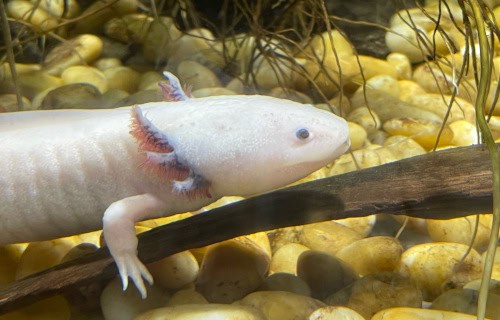
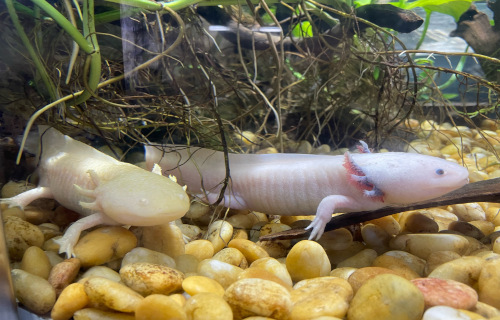
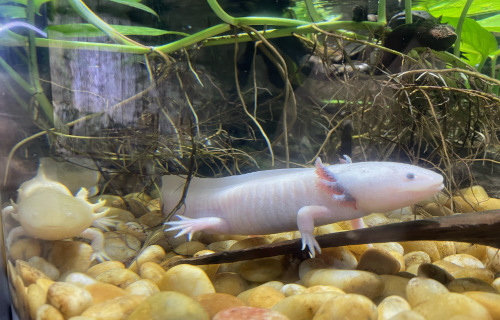

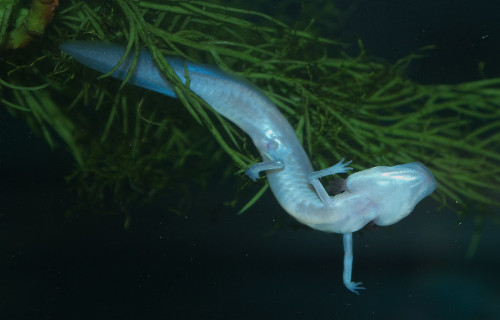
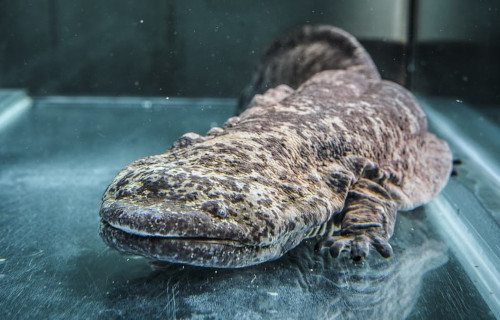
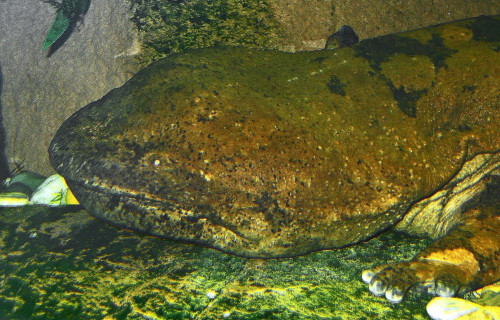
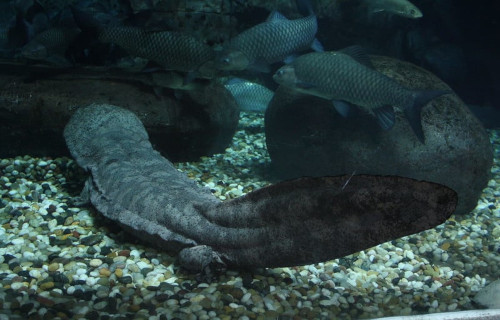









Leave a Reply